Passengers 0 Survivors 0 Date 3 September 2010 Injuries (nonfatal) 0 Fatalities 2 (all) | Crew 2 Survivor 0 | |
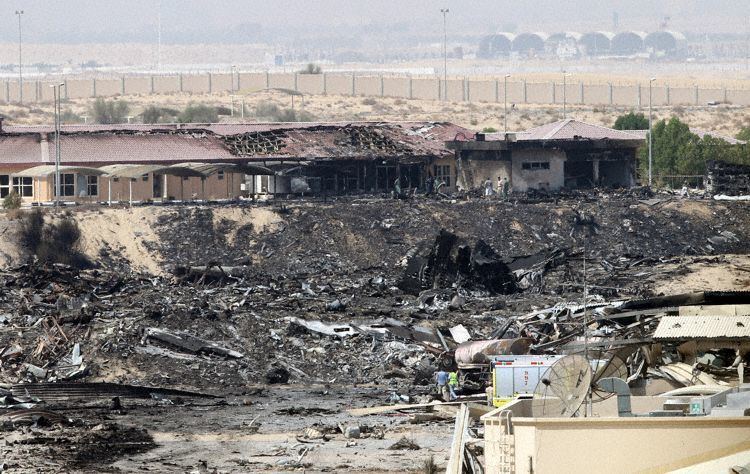 | ||
Summary In-flight uncontained cargo fire caused by lithium ion batteries Similar United Express Flight 5925, Kegworth air disaster, FedEx Express Flight 80, Lauda Air Flight 004, Atlantic Southeast Airlines Fl | ||
Fs2004 fatal delivery ups airlines flight 6
UPS Airlines Flight 6 was a cargo flight operated by UPS Airlines. On September 3, 2010, a Boeing 747-400F flying the route between Dubai International Airport and Cologne Bonn Airport developed an in-flight fire, with the fumes and subsequent crash resulting in the death of the two crew members. The aircraft had departed Dubai International earlier, but returned after reporting smoke in the cockpit. It was the first fatal air crash for UPS Airlines. The crash caused an examination of safety procedures protecting airliners from cockpit smoke.
Contents
- Fs2004 fatal delivery ups airlines flight 6
- Aircraft
- Flight crew
- Crash
- Investigation
- FAA reaction
- In popular culture
- References
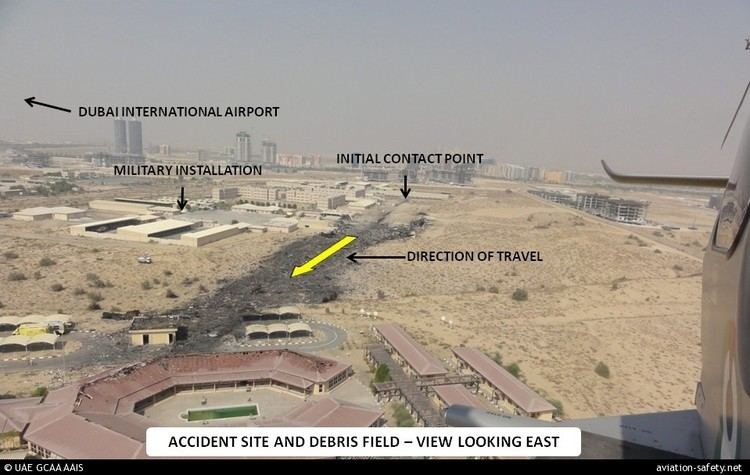
Aircraft

The aircraft involved in the accident was a Boeing 747-400F, registered N571UP and was delivered to UPS Airlines in 2007. It had flown for more than 10,000 hours, and had a major inspection performed in June 2010. Before the crash, it was among the newest (#1,393 of 1,418; the 26th from the last) Boeing 747s built before 747-8 series.
Flight crew
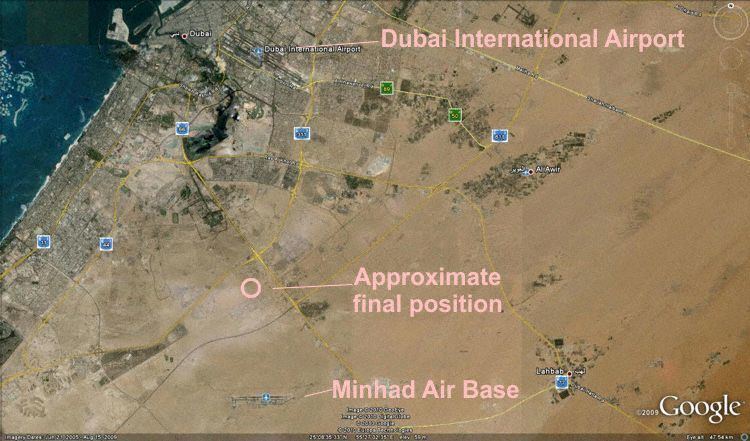
The captain was 48-year-old Douglas Lampe of Louisville, Kentucky, and the first officer, 38-year-old Matthew Bell from Sanford, Florida. Both crew members were based in UPS's Anchorage, Alaska pilot base.
Crash
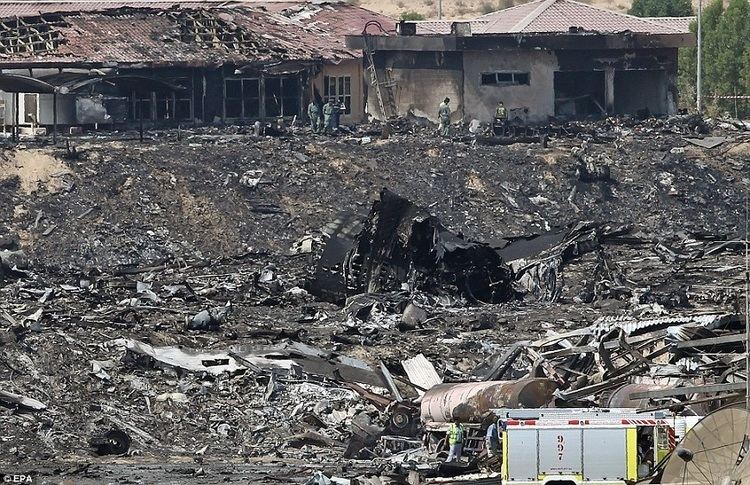
Flight 6 departed from Dubai International at 14:53 UTC and at 15:15 the crew reported a fire in the cockpit when the aircraft was around 120 nautical miles (220 km) west-northwest of Dubai, and an emergency was declared shortly afterwards. The pilots were under the control of Bahrain's air traffic control, and they could not initially contact Dubai air traffic control due to the thick smoke in the cockpit. Although they were offered a diversion to Doha, Qatar, the captain made the decision to return to Dubai. Captain Lampe's oxygen mask failed and he left his seat to get a spare oxygen mask—from that point he was never heard on the CVR again. It was believed that the fire had also cut off the oxygen supply to the spare oxygen mask, leaving Captain Lampe with no oxygen left to return to the pilot seat and fly the plane. The co-pilot was instructed to land on the airport's runway 12L. The aircraft was too high on the approach and the gear did not extend. The aircraft passed over the airport before making a tight turn. Bell attempted to turn towards Sharjah International Airport but unknowingly turned in the wrong direction. Radar contact was lost shortly thereafter at 15:42 UTC. The aircraft finally slammed into the ground at a shallow angle and at high speed in an unpopulated area between the Emirates Road and Al Ain Highway, barely missing Dubai Silicon Oasis. The aircraft hit right wing first and skidded a few meters, and exploded in a fireball, killing both pilots. Other than ATC, many initial reports came from pilots working for Emirates who were living in the community.
Investigation
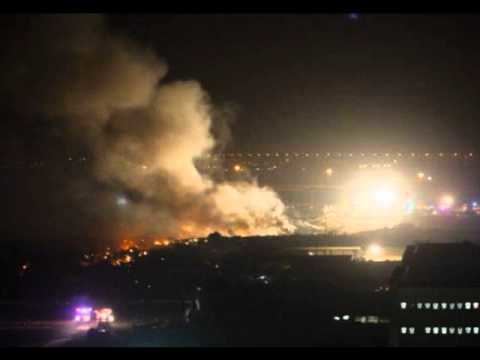
The National Transportation Safety Board announced that it would dispatch an aviation investigator to assist the United Arab Emirates General Civil Aviation Authority (GCAA) in its investigation of the crash. Boeing offered to send a team to the United Arab Emirates to provide technical assistance in the investigation process.
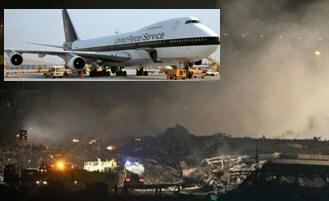
Following the recovery of the cockpit voice recorder, the GCAA issued a preliminary report on the September 5, 2010. On September 7, the authorities discovered the flight data recorder. The government of Bahrain decided to conduct its own investigation into the accident. UPS also sent its own investigation team. The flight data recorder and cockpit voice recorder were sent to the United States for analysis by the National Transportation Safety Board on September 10, 2010.
As of September 8, 2010, the GCAA and UPS had not commented on the progress of the investigation, but according to Associated Press sources, people familiar with the investigation were saying the fire may have started in the cargo compartment and that the investigators were checking the cargo to determine what was loaded on the aircraft. On September 8, 2010 the head of the GCAA, director general Saif al Suwaidi, said that it was still too early to determine exactly what the cause of the crash was.
The investigation revived safety concerns about the effects of smoke in the cockpit. The crash also revived concerns over whether smoke hoods should be allowed in the cockpit. Prior to the crash of UPS Flight 6, debate over whether manufacturers and regulators had been doing enough to prevent airborne fires had occurred. Around the time of the crash, the National Transportation Safety Board had asked the Federal Aviation Administration (FAA) to install automatic fire extinguisher systems in the holds of cargo aircraft. UPS Airlines followed FAA regulations, which stated that pilots should depressurize the main cabin and climb to an altitude of at least 20,000 feet (6,100 m) upon detection of a fire so as to deprive the flames of oxygen.
On September 23, 2010, the GCAA reported that 100% of the material contained in the cockpit voice recorder and flight data recorder was successfully downloaded by the NTSB and that the data was being analyzed. In October 2010, Boeing announced that fire indication checklists were to be modified to instruct pilots that at least one of the three air conditioning systems must be left in operation in order to prevent excessive smoke accumulation on the flight deck.
On July 24, 2013, the GCAA released the final investigation report. The report indicated that the fire was caused by the autoignition of the contents of a cargo pallet, which contained "a significant number" of lithium type batteries and "other combustible materials".
FAA reaction
In October 2010, the FAA issued a Safety Alert for Operators highlighting the fact that the cargo on board Flight 6 contained a large quantity of lithium type batteries. The FAA issued a restriction on the carrying of lithium batteries in bulk on passenger flights.
In popular culture
The crash was featured in the 15th season of Mayday (or Air Crash Investigation) on 11 January 2016. The episode aired on the National Geographic Channel (UK) is titled "Fatal Delivery".
